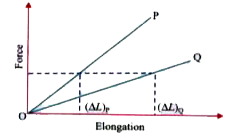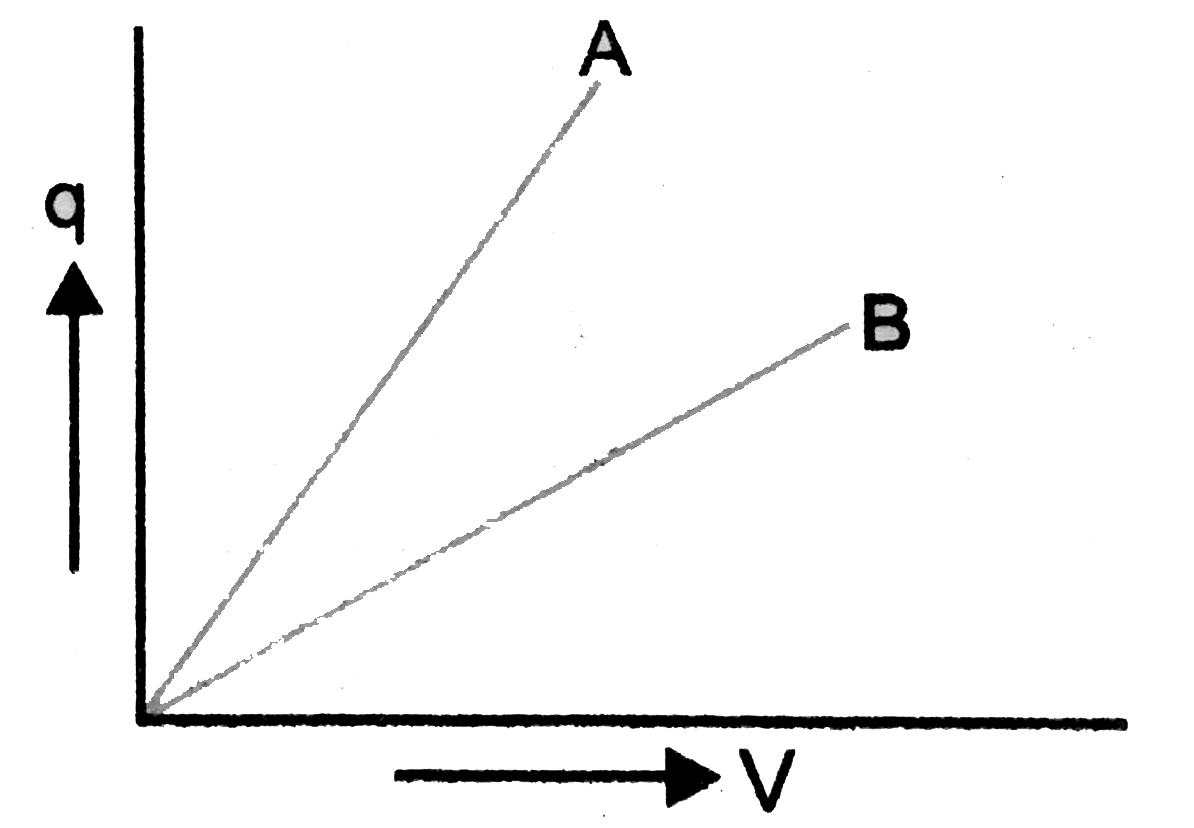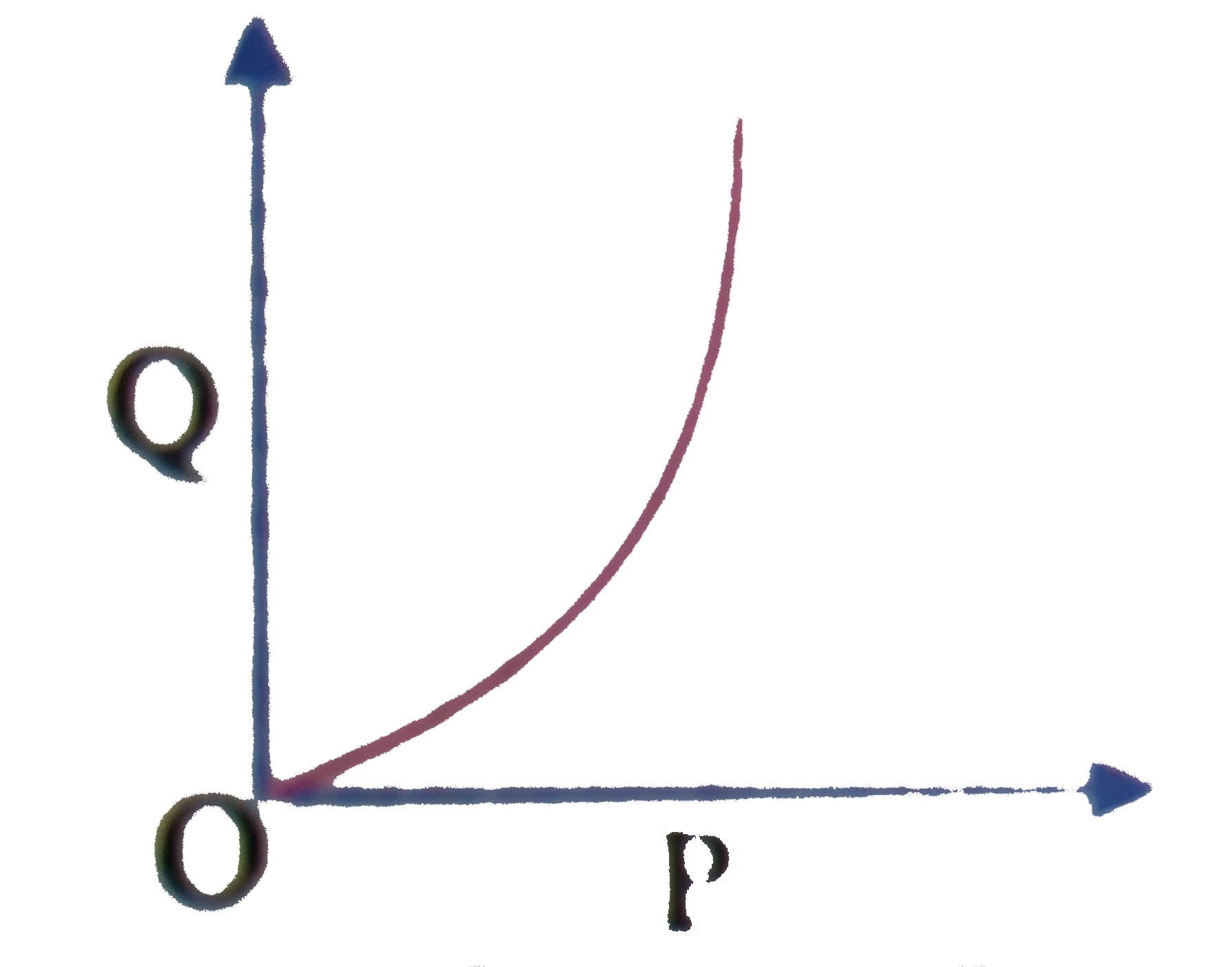The graph in Fig. 11.8 shows the variation of elongation with tensile force for two wires P and Q.

If P and Q are of the same material and have the same length, which one has a greater area of cross section ?
In the stress versus strain graph, Young.s modulus is given by the slope of the linear region.
E and L are same.
E=(F/A)(ΔL/L) or (FA)=E(ΔLL)
∴FA∝ΔL since E and L are same.
For a given F, A∝1ΔL
From Fig. 11.8, for any given F, we see that
(ΔL)Q>(ΔL)P
∴AQ<AP⇒ Wire P has a greater cross section.
Topper's Solved these Questions
- ELASTICITYBOOK - CENGAGE PHYSICSCHAPTER - ELASTICITYEXERCISE - MANDATORY EXERCISE (Exercise Set I)
6 Videos
- ELASTICITYBOOK - CENGAGE PHYSICSCHAPTER - ELASTICITYEXERCISE - MANDATORY EXERCISE (Exercise Set II)
9 Videos
- DESCRIPTION OF MOTIONBOOK - CENGAGE PHYSICSCHAPTER - DESCRIPTION OF MOTIONEXERCISE - OLYMPIAD AND NTSE LEVEL EXERCISE
10 Videos
- FRICTIONBOOK - CENGAGE PHYSICSCHAPTER - FRICTIONEXERCISE - OLYMPIAD AND NTSE LEVEL EXERCISES (Read the given statements and select the correct option.)
1 Videos
Similar Questions
Two wires of the same material have resistances in the ratio 16:81 and lengths in the ratio 1:4. Compare their radii of cross-section.
View SolutionThe given graph in Fig. shows the variation of charge q versus potential difference for two capacitors C1andC2. The two capacitors have same plate sepration, but the plate area of C2 is double that of C1.

Which of the lines in the graph correspond to C1andC2 and why ?
View Solution
Knowledge Check
Two wires of the same material have equal lengths but A is thicker than other B. Which of the two has greater value of Young's modulus?
AABBCsame for A and BDcant perdictA piece of wire P and three identical cells are connected in series. An amount of heat is generated in a certain time interval in the wire due to passage of current. Now, the circuit is modified by replacing P with another wire Q and N identical cells, all connected in series Q is four times longer in length than P. The wire P and Q are of same material and have the same diameter. If the heat generated in second situation is also same as before in the same time interval, the find N.
A1B6C16D36Two wires A and B have the same cross section and are made of the same material, but the length of wire A is twice that of B. Then, for a given load
Athe extension of A will be twice that of BBthe extensions of A and B will be equalCthe strain in A will be half that in BDthe strains in A and B will be equal
Two wires are of the same material but of different lengths and areas of cross-section. Will their resistivities be same or different ?
View SolutionA wire of given metarial having length l and ares of cross-section A has a resistance of 4Ω. What would be the resistance of another wire of the same meterial having length l/2 and area of cross-section 2A ?
View SolutionTwo satellites P and Q are in the same circular orbit round the earth. The mass of Pis greater than that Q. It follows that
View SolutionAn electric wire of length ‘ I ’ and area of cross-section a has a resistance R ohm s. Another wire of the same material having same length and area of cross-section 4a has a resistance of
View SolutionThe graph show the behaviour of a length of wire in the region for which the substances obeys Hooke's law. P and Q represent

View Solution
